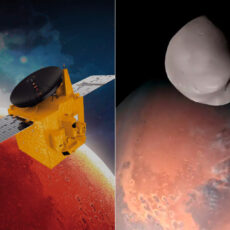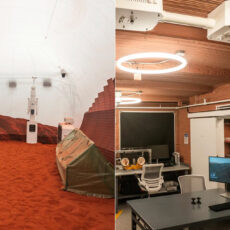
NASA’s Perseverance Mars rover recently captured a mesmerizing blue sunset at approximately 5:04:58.610 PM with its Navcam. The blue color near the Sun isn’t because of the clouds of water ice, but rather the Martian dust itself.

The dust absorbs blue light, giving the sky its red appearance, but also scatters some of the blue light into the area just around the Sun because of its size. This only becomes apparent near sunrise and sunset, when the light has to pass through the largest amount of fine dust.
- Feed a passion for science and technology – Kids can learn more about the challenges of space exploration with this LEGO Technic NASA Mars Rover...
- Conduct a test flight – This advanced building kit for kids ages 10 and up includes a buildable toy version of NASA’s Ingenuity helicopter, which...
- AR brings the mission to life – The accompanying augmented reality app experience lets kids dive into the details of the rover and its mission
The colors come from the fact that the very fine dust is the right size so that blue light penetrates the atmosphere slightly more efficiently. When the blue light scatters off the dust, it stays closer to the direction of the Sun than light of other colors does. The rest of the sky is yellow to orange, as yellow and red light scatter all over the sky instead of being absorbed or staying close to the Sun,” said Mark Lemmon of Texas A&M University, College Station.










